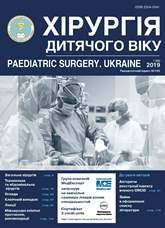Diagnostics and treatment of hip dysplasia and congenital hip dislocation in children
DOI:
https://doi.org/10.15574/PS.2019.62.90Keywords:
hip joint, dysplasia, congenital hip dislocation, childrenAbstract
Hip dysplasia and congenital hip dislocation are caused by prenatal developmental disorder of the fetus and are dependent on many endogenous and exogenous factors, such as inheritance, sex, influence of feminine sexual hormones and relaxin hormone. The process of hip joints formation is also influenced by mechanical factors, limiting fetal movements and impeding his normal position in uterus (breech, foot and transverse presentation) namely: multifetal pregnancy, uterine abnormalities and diseases (bicornuate uterus, arcuate uterus, uterine tumors), different deformations of pelvic bones, hypohydramnios, polyhydramnios. Teratogenous hip dislocation is a separate pathology. The following symptoms characteristic for hip dysplasia and congenital hip dislocation are present during clinical assessment: Ioachimstal, Marx-Ortholani, Barlow, Pelteson, Dupuitren, Duchennes-Tredelenburg symptoms, asymentric skin folds, extremital shortening on a sick side. Diagnosis should be confirmed with ultrasound (for children younger than 5 m.o.) or X-ray (for children older than 5 m.o.). the earliest possible start of treatment ensures the effectiveness of conservative treatment that includes physiotherapy, massage, the use of special devices (prophylactic braces, Pavlik harness, Koshley frame, Freyka pillow, Gnevkovskyy type apparatus), over head extension, closed reduction of hip dislocation under general anesthesia. The indications for surgical treatment are: lack of the possibility of a closed reduction of congenital hip dislocation (high dislocation, a significant degree of anthetorcia and valgus deformity of the femoral neck, significant degree of acetabulum underdevelopment), reluxation after a closed reduction of congenital hip dislocation; diagnosis of congenital hip dislocation over the age of 2 years old.
The following types of surgical operations are used: open reduction of congenital hip dislocation, open reduction of hip dislocation with plastics of acetabulum (Solter. Pemberton, Chiari operations, triple osteotomy of pelvic bones) and reconstruction of proximal hip; palliative surgeries. Patients with hip dysplasia and congenital hip dislocation is to be observed by orthopedic surgeon until the end of growth period.
References
Barta O. (1972). Vrozhdennyiy vyivih beder i ego rannee konservativnoe lechenie. Budapesht: Izd-vo AN Vengrii: 215.
Bodnya AI, Garbuznyak IN, Korzh NA, Klimovitsky VG at al. (2014). Lectures course on orthopedics and traumatology. Third Edition edited by VF Prozorovsky. Kharkov: Collegium: 464.
Vovchenko AYa, Kutsenok YaB, Zinchenko VV, Demyan YuYu. (2004). Nash opyit ultrazvukovoy diagnostiki displazii tazobedrennogo sustava. Visnik ortopediyi travmatologiyi ta protezuvannya. 2:41–45.
Volkov MV, Ter-Egiazarov GM, Yukina GP. (1972). Vrozhdennyiy vyivih bedra Moskva: Meditsina:170.
Graf R, Farkas P, Lerher K i dr. (2001). Ultrasonografiya v diagnostike i lechenii displazii tazobedrennogo sustava u detey. Rukovodstvo po sonografii tazobedrennogo sustava. Vilnius: Med diagnost centras: 42.
Korol'kov AI (2008). Rehabilitation treatment of children after repeated surgical interventions in case of recurrence of congenital hip dislocation and subluxation. Bulletin of physiotherapy and balneology. 3: 76–80.
Korolkov OI. (2011). Retsydyvy urodzhenoho vyvykhu ta pidvyvykhu stehna. Kharkiv: 35.
Krys-Puhach AP, Buryn MD. (2002). Obstezhennia ta diahnostyka oporno-rukhovykh rozladiv u ditei. Kyiv: Khmelnytskyi: 215.
Kutsenok YaB, Rulla ЭA, Melnyk VV. (1992). Vrozhdennaia dysplazyia tazobedrennoho sustava, vrozhdennыi podvыvykh y vыvykh bedra. Kyev: Zdorove:184.
Pro zatverdzhennia Protokoliv diahnostyky ta likuvannia zakhvoriuvan ta travm oporno-rukhovoho aparatu u ditei. Nakaz MOZ Ukrainy vid 26.07.2006 No.521. http://www.moz.gov.ua.
Pyikov MI, Vatolin KV. (2001). Detskaya ultrazvukovaya diagnostika. Moskva: Vidar: 680.
Shevtsov VI, Makushin VD, Teplenkiy MP, Atmanskiy IA. (2006). Lechenie vrozhdennogo vyiviha bedra (novyie tehnologii osteosinteza modulyami apparata Ilizarova). Kurgan: Zaurale: 1000.
Downloads
Issue
Section
License
The policy of the Journal “PAEDIATRIC SURGERY. UKRAINE” is compatible with the vast majority of funders' of open access and self-archiving policies. The journal provides immediate open access route being convinced that everyone – not only scientists - can benefit from research results, and publishes articles exclusively under open access distribution, with a Creative Commons Attribution-Noncommercial 4.0 international license(СС BY-NC).
Authors transfer the copyright to the Journal “PAEDIATRIC SURGERY.UKRAINE” when the manuscript is accepted for publication. Authors declare that this manuscript has not been published nor is under simultaneous consideration for publication elsewhere. After publication, the articles become freely available on-line to the public.
Readers have the right to use, distribute, and reproduce articles in any medium, provided the articles and the journal are properly cited.
The use of published materials for commercial purposes is strongly prohibited.

